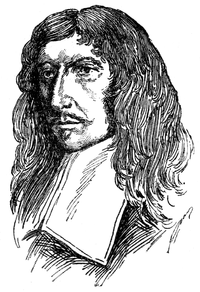Jean d'Estrées, Count of Estrées

Jean II d'Estrées, (3 November 1624 in Solothurn, Switzerland – May 19, 1707 in Paris), was a Marshal of France, and an important naval commander of Louis XIV. He was born to a noble family from Picardie. His aunt was Gabrielle d'Estrées, lover of King Henry IV of France.
In the Army
Like his father François Annibal d'Estrées, also Marshal of France, Jean pursued a military career from a very young age. He became a colonel at 23, a maréchal de camp at 25 and a lieutenant general at 33.
He fought in the Battle of Lens (1648) under the grand Condé. After that he fought under Turenne in Lorraine in 1652 - 1653 and then in Flanders. He was made prisoner at Valenciennes in 1656.
He was loyal to the Royal family during the Fronde.
In the Navy
In 1668 he joined the new French Navy on demand of his friend Colbert. There his patron was the Duke de Beaufort. He rose through the ranks very fast, thanks to the influence of his family name, becoming Marshal of France in 1681.
His first campaign was in the Caribbean. He returned four times, becoming the French naval specialist in the region.
During the Franco-Dutch War, he was put in command of the French fleet which would fight alongside the English fleet against the Dutch. He participated on board the Saint Philippe in the Battle of Solebay in 1672 and the next year on the la Reine, in the Battle of Schooneveld and the Battle of Texel.
In 1676 and 1677, he conquered Gorée, Cayenne and Tobago, destroying the Dutch fleet based there.
Las Aves Disaster
Following his successes at Cayenne and Tobago, d'Estrées planned to attack the Dutchs at Curaçao island. His fleet—12 men of war, 3 fireships, 2 transports, a hospital ship and 12 privateers—met with disaster, losing 7 of the men of war and 2 other ships when they struck reefs off the Las Aves archipelago due to a navigational error on 11 May 1678, a week after setting sail from Saint Kitts.
According to the captain of d'Estrées flagship Terrible, Nicholas Lefèvre de Méricourt, d'Estrées was solely at fault and had abandoned the ship to its fate. Navy minister Seignelay received other reports, including d'Estrées own, which told a different story and one more favourable to the unpopular admiral. According to these, the pilots of d'Estrées ships had been unable to agree on their position on the morning of 11 May, and the navigators had been unable to fix their latitude. To avoid the risk of running onto shoals and reefs, d'Estrées sent three of the privateer ships ahead of the fleet to get timely warning of hazards. When night fell, the privateers fell back closer to the main body, but still ahead of it. These privateers, however, were light ships and of shallow draft, so that they passed over the reef before they even noticed it. They fired guns to warn the fleet following them, but there was not enough time for the large men of war to change course and the result was that nine ships were lost. Loss of life was fortunately light, only 24 sailors being lost, some drowned, dead drunk.
With the loss of half his fleet, d'Estrées had to return to France. He was exonerated of personal responsibility for the disaster.
Family
He married Marie Marguerite Morin and had the following children:
- Victor-Marie d'Estrées
- Jean d'Estrées
- Marie Anne Catherine d'Estrées, who will marry Michel François Le Tellier, oldest child of François-Michel le Tellier, Marquis de Louvois
References
- Dessert, Daniel (1996). La Royale. Vaisseaux et marins du Roi-Soleil. Paris: Fayard. pp. 187–191, 249–252. ISBN 2-213-02348-4.
